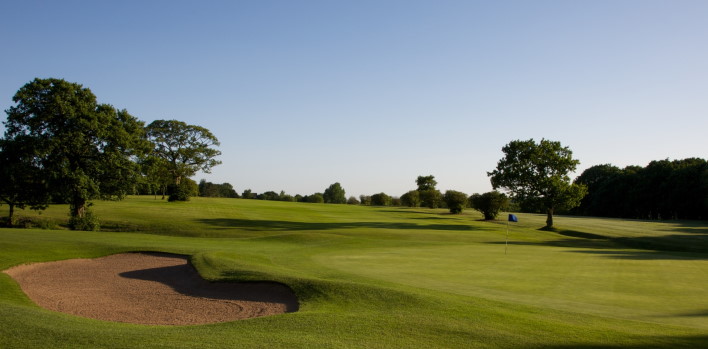Parkstone

By my personal reckoning there are less than a dozen and if you factor in that there are around 3,000 in total across England, Scotland, Wales and Ireland this is high praise indeed. It’s not perfect, but it’s not far off.
The main reason I rate the course so highly amongst the best inland venues is because of the exciting terrain and the plethora of wonderful green sites. The undulating, twisting nature of this mature coastal property is a dream and encourages all sorts of daring shots; descending drives and approaches to elevated greens are two things that feature time and time again.
Willie Park Jnr was initially responsible for the design in 1909 although major changes were made by James Braid just over twenty later whilst in more recent times significant tree removal has taken place based on recommendations by Donald Steel and bunker work carried out by Martin Hawtree.
Situated on very sandy soil and close to the sea this terrain was simply made for golfing. You play through splendid pine with glorious vistas opening up time and time again. The masses of heather were not in full purple bloom on my visit so I can only imagine how wonderful it looks later on in the year.
The green complexes at virtually every hole are superb, engaging and make you not only think about the shot at hand but potentially the next one too if things go wrong. And if Parkstone is not truly great from the tee, it is certainly very good.
The collection of par-three’s is excellent. Ranging from 142 to 201 yards each of the five one-shotters ask you to find the green otherwise a tricky recovery shot awaits; this may be from sand, closely mown grass or heather. The pick of the bunch is arguably the 14th which is found at the far end of the course and is played at a different angle to many of the other holes. It’s not the best looking of the set but there is a very steep drop-off to the left and a delicate swale to the right which protects this long and narrow green really well. Others may cite the 18th as their favourite; it is certainly the most visually striking as it is angled into a heather clad hillside with a deep bunker fronting it along with another shallower trap to the right with an option of trying to work the ball between the two for those who can’t make the 185-yard carry to the front-edge of the putting surface. The dropping 16th is perhaps the weakest of the short holes but is by no means poor.
I’m not usually a fan of par-fives in great numbers but the ones here - all five of them - are exemplary, varied and nicely spaced. The tumultuous third (with a handsomely located tee in the middle of a lake) and the slinging sixth come early on and perhaps offer the best chance of a birdie and the opportunity to get your round off to a good start. Meanwhile, the simplicity of the angled green at the ninth, where you must flirt with the out-of-bounds for a straight shot up the green, is as clever as it is brilliant. And the 11th is also well worked although broken ground before the green means a mid-iron lay-up is probably required because there is little merit in going for the well defended green in two. Finally, the 17th is magnificent - my personal favourite - as it snakes and climbs through sandy banks of heather to a secluded green; choosing and executing the correct line and shape from the tee is required in order to set up a chance of having a pop at this distinguished hole.
That leaves us with just eight par fours and with the exception of the eighth, which I wasn’t particularly fond of, they are all superb. The approach to the first, the options provided at the fourth, the green at the fifth, the entire 10th, the tempting nature of the 12th, the beauty of the 13th and the drive at the 15th all rank amongst some of the best shots and holes you’ll play.
Parkstone has a reputation for being in excellent condition and this was certainly the case on my visit for the 36 Hole Wimborne Cup open competition where the course was presented and set-up as well as any I’ve seen.
There’s little not to like about Parkstone. Some may argue it is missing a long par-four or two – most are under the 400 yard mark and the longest is the 422-yard 15th which is played from a high tee - but that isn’t what the course is all about and should act as a reminder that there is more to good golf than merely length. Either way it's highly underrated as it stands.
With its five short holes and five par-fives there is a real sense of fun, adventure and creativity when playing here. The ebb and flow of the round at Parkstone is contagious. Par is 72 and the maximum yardage is just 6,282 but there is a lot of golf packed into that.
From afar I believe the trio of heathland courses in Dorset all vie for the title of being the best, eagerly looking out to see how they compare in the various rankings, and have improved their courses in recent years to up their game. After having played all three, if it’s an unbiased opinion you are looking for, Parkstone is a clear winner, in fact it’s not even close.



